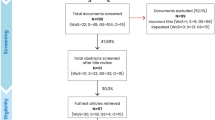Abstract
Rebuilding of victims' livelihoods was a crucial issue in the restoration process in the1995 Hanshin-Awaji Earthquake Disaster. Housing damage assessment influencedmost of the rebuilding of the livelihood in the long term, because the Victim Certificatesissued by the local governments based on the results of the Housing damage assessmentwas required to receive most of the individual assistance measures. In the process ofHousing damage assessment, many complex problems arose, leading to extensivework on the part of the disaster responders. Consequently, a considerable number ofvictims were dissatisfied with the assessment and applied for a resurvey. Due to a floodof requests for resurvey, disaster responders had to work on damage assessment, leavingrelief activities aside.
In order to facilitate Housing damage assessment, this paper discusses thefollowing five points: (1) the processes and the problems of assessments performedin the Hanshin-Awaji Earthquake Disaster, (2) the changes in the nature of informationneeded by the victims, (3) the improvements over the present damage assessment, (4)the housing situation in Japan, and (5) the international situation on damage assessment.
It is obvious from the results that a poor damage assessment system and the size ofthe disaster produced a very large work load. Differences in appreciation among theinvestigators also contributed to unfair assessments and led to the victims beingincreasingly dissatisfied by the survey results. Finally, a design concept for acomprehensive damage assessment system, which has been derived from theabove five points, is proposed for post-disaster management.
Similar content being viewed by others
References
Architectural Institute of Japan and City Planning Institute of Japan: 1995, Report of Emergency Damage Survey of the 1995 Hyogoken‐Nanbu Earthquake.
Applied Technology Council: 1989, Procedures for Post‐earthquake Safety Evaluation of Buildings, ATC 20.
Applied Technology Council: 1994, FieldManual: Procedures for Post‐earthquake Safety Evaluation of Buildings, ATC 20‐1.
Applied Technology Council: 1995, Addendum to the ATC‐20 Post‐earthquake Building Safety Evaluation Procedures, ATC 20‐2.
Applied Technology Council: 1993, Post‐earthquake Safety Evaluation of Buildings, Training Manual, ATC 20‐T.
Building Research Institute of Japan: 1996, Final Report of Damage Survey of the 1995 Hyogoken‐Nanbu Earthquake (in Japanese).
Earthquake Disaster Mitigation Research Center (EDM): 2000a, Report on the Kocaeli, Turkey Earthquake of August 17, 1999, EDM Technical Report, No. 6.
Earthquake Disaster Mitigation Research Center (EDM): 2000b, Report on the Chi‐Chi, Taiwan Earthquake of September 21, 1999, EDM Technical Report, No. 7.
Hayashi, H. and Shigekawa, K.: 1997, Producing disaster ethnography for the development of disaster ethnology. Papers of the Annual Conference of Social Safety Science, No. 7, 376–379 (in Japanese).
Horie, K., Maki, N., Kohiyama, M., Lu, H., Tanaka, S., Hashitera, S., and Hayashi, H.: 2000a, Development of building damage chart for post disaster management, Proceedings of 12th World Conference on Earthquake Engineering (CD‐ROM), Paper ID 2212.
Horie, K., Maki, N., Shigekawa, K., Tanaka, S., and Hayashi, H.: 2000b, Development of damage assessment for wooden structures‐correlation between damage assessment purpose and category, Journal of Social Safety Science, No. 2, 139–144 (in Japanese).
Hyogo Prefectural Government, Committee for Global Assessment of Earthquake Countermeasures: 2000a, Verification of the extent of disaster, Assessment Reports of the Global Assessment of Earthquake Countermeasures, 1, 47–105.
Hyogo Prefectural Government, Committee for Global Assessment of Earthquake Countermeasures: 2000b, Verification of the extent of disaster, Assessment Reports of the Global Assessment of Earthquake Countermeasures 4, 31–67.
Kimura, R., Hayashi, H., and Tatsuki, S.: 2000, Housing recovery patterns of the 1995 Kobe Earthquake Victims: results from 1999 Hyogo random sampled survey, Proceedings of International Workshop on Annual Commemoration Chi‐Chi Earthquake, Volume IV, social aspect, 158–167.
Kohiyama, M., Horie, K., Maki, N., Tanaka, S., and Hayashi, H.: 2000, Proposal for the effective building damage assessment for disaster management, Journal of Structural and Construction Engineering, AIJ 531, 189–196 (in Japanese).
Maki, N. and Hayashi, H.: 2000, Building codes and tradeoffs for earthquake risk reduction: Disaster management for housing, Proceedings of 12th World Conference on Earthquake Engineering (CD‐ROM), Paper ID 2556.
Murao, O. and Yamazaki, F.: 1999, A comparison of damage evaluation by local governments after the Hyogoken‐Nanbu earthquake, Journal of Architecture, Planning and Environmental Engineering, AIJ 515, 187–194 (in Japanese).
New Zealand National Society for Earthquake Engineering: 1998, Post‐earthquake building safety evaluation procedures, preparedness checklist and response plan for territorial authorities.
Okada, S. and Takai, N.: 2000, Classifications of structural types and damage patterns of buildings for earthquake field investigation, Proceedings of 12th World Conference on Earthquake Engineering (CD‐ROM), Paper ID 0705.
Author information
Authors and Affiliations
Rights and permissions
About this article
Cite this article
Horie, K., Maki, N., Kohiyama, M. et al. Process of Housing Damage Assessment: The 1995 Hanshin-Awaji Earthquake Disaster Case. Natural Hazards 29, 341–370 (2003). https://doi.org/10.1023/A:1024777104808
Issue Date:
DOI: https://doi.org/10.1023/A:1024777104808




